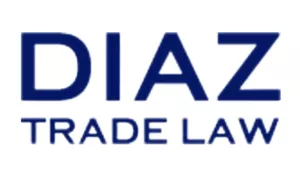Donald Trump favors tariffs. Leading up to the 2024 election, he called himself the "tariff man" and stated that tariffs are "the greatest thing ever invented" and "the most beautiful word in the dictionary."
Although the specifics of Donald Trump's tariff plan have yet to be revealed, he has made numerous public statements about the tariffs he has in mind. At a rally in North Carolina, he suggested imposing a 10-20% tariff on all imported goods. He also said that he would impose a 25% tariff on imports from Mexico if the country does not help curb the flow of immigrants and drugs over the border. He has also suggested a massive 60% to 100% tariff on Chinese origin goods.
So, what can importers do to prepare? A lot!
First, What is a Tariff?
A tariff (also known as a duty) is a tax levied by governments on the value of imported products. Tariffs differ greatly by country and by individual product. In the United States, tariffs are collected by U.S. Customs and Border Protection (CBP) and the money goes to the U.S. Treasury.
The importer of record is responsible for correctly classifying their goods and paying the appropriate duty rate. Tariffs are not paid by the foreign seller or the country from which the goods are imported, thus the costs are generally passed along to the U.S. consumer.
Learn more about how tariffs work here.
Strategies to Minimize Tariff Costs
An increase in tariffs can undoubtedly have a significant impact on any business involved in importing goods into the U.S. However, importers are not without options. Below are several strategies to legally minimize tariff costs.
Duty Drawback
If you import products into the U.S. only to export them to another country, you may be entitled to compensation for the duties paid upon importation to the U.S. Duty Drawback provides for the refund of up to 99% for certain duties, internal revenue taxes, and fees collected by CBP upon importation. The drawback may be granted only after the subjected item(s) have been either exported or destroyed (under CBP supervision).
In order to receive a Duty Drawback, a Customs broker must file a submission to CBP on behalf of the importer. While potentially beneficial, it is important to recognize that the duty drawback process is detailed and may span the course of months before any monetary compensation is received. Some of the required information includes proof of the export or destruction, as well as proof that duty was originally paid.
Tariff Engineering
Tariff engineering involves altering the condition of a good before it is imported so that it is legally classified under a favorable Harmonized Tariff Schedule of the U.S. (HTSUS) classification to benefit from a lower duty rate. Since CBP can only levy tariffs based on the condition of goods at the time of importation, tariff engineering gives importers the opportunity toredefine their imported products and pay lower duties.
An importer cannot simply re-classify the exact same good under a different HTSUS (this would be evasion); rather, the imported product must actually embody the qualities of another HTSUS, which happens to have lower duties.
In order to properly re-classify the imported good, importers should review the HTSUS classification of the good and determine whether any modifications can be made to the product before it is imported so that a more favorable classification would apply.It is essential to meet with an expert to discuss your specific product and packaging to determine whether a slight adjustment can have a big impact on tariffs.
Country of Origin Change
An additional option is to consider relocating operations or your sourcing country, i.e., the product's country of origin. If a given country has exceptionally higher import duties than a comparable third country, you can move your supply chain to the duty-free nation.
While potentially costly to initially relocate, changing the country of origin will allow you to import the exact same item(s) without paying the additional duties. If considering this option, one must be cognizant of the list of nations that have a free-trade agreement with the United States. Even though another nation may not be subjected to substantial duties, shifting your supply chain to a nation that has a formal, free and fair-trade agreement with the U.S. ensures accountability and reliability.
In the wake of Donald Trump's election victory, at least one U.S. company, Steve Madden, has already announced their intention to import fewer goods made in China to the U.S. to avoid higher tariffs.
First Sale
First Sale is a system that decreases the dutiable value of imported goods by authorizing importers to use the price paid in the first sale. It allows an earlier sale to be used in declaring customs value as long as that sale can be documented as a sale for exportation to the United States and the importer meets all other Customs requirements.
Consequently, that equivalent value is assigned according to the transaction between the manufacturer and the middleman, not between the middleman and the new buyer.
CBP's Informed Compliance publication "Bona Fide Sales & Sales for Exportation to the United States" discusses the two elements required to qualify for the first sale program.
The importer must establish:
- A "bona fide" sale and
- The goods were clearly destined for export to the United States at the time of the sale to the middleman
If these two elements are present, the transaction value requirement is satisfied. However, the "bona fide" sale requirement is nuanced, and we recommend seeking legal advice before importing goods using the first sale rule.
Duty Deferral
If an importer cannot lower the tariff burden, they can consider deferring the cost of duties through Foreign Trade Zones and/or Bonded Warehouses.
Foreign Trade Zones
Foreign Trade Zones (FTZs), although technically within the geographic limits of the U.S., are secured areas considered outside U.S. Customs territory. Foreign and domestic merchandise may be admitted into an FTZ for operations such as storage, exhibition, assembly, manufacture, redistribution, processing, and more. FTZs allow users to defer, reduce, or eliminate Customs duties.
Bonded Warehouse
Unlike FTZs, bonded warehouses are within U.S. customs territory. A customs-bonded warehouse is a secured area in which imported merchandise may be stored without payment of duty for up to 5 years.
Importers may repackage, sort, or label imports at these locations under the supervision of U.S. customs officials. Manipulation of merchandise is generally prohibited unless approved by U.S. Customs.
Negotiate DDP Incoterm
International commercial terms ("Incoterms") are published by the International Chamber of Commerce (ICC) as a commitment to facilitate international trade and promote open markets. The ICC developed Incoterms to provide a common language for traders and to establish a global system of rules to govern trade. Incoterms are not law, and instead are designed to prevent confusion between global traders by clarifying contract obligations of buyers and sellers.
Negotiating Incoterms with partners is another way to minimize import costs. Importers should review their contracts and negotiate a "delivery duty paid" (DDP) incoterm. DDP terms place the responsibility (including export and import clearance, transport costs, import duties, and packaging costs) for the delivery of goods on the seller. The seller acts as the importer of record and has the ability to deduct costs like freight, duty, and insurance from the dutiable value. Another advantage of the DDP term is that, if properly structured, it can reduce the total impact of the tariffs.
Proceed with Caution When Attempting to Minimize Tariffs
Importers exploring options to minimize tariff liability should always work with an expert to ensure they continue to meet all U.S. Customs regulations. Duty evasion is a serious crime and can result in serious monetary penalties or even prison time in the case of fraud.
Learn more:
- Bloomberg Law: Tariff Classification Basics
- Webinar: Navigating CBP Regulations: Essential Practices for Import Success
- Webinar: Building and Maintaining an Effective Import Compliance Plan
- Webinar: Introduction to Importing
The content of this article is intended to provide a general guide to the subject matter. Specialist advice should be sought about your specific circumstances.


